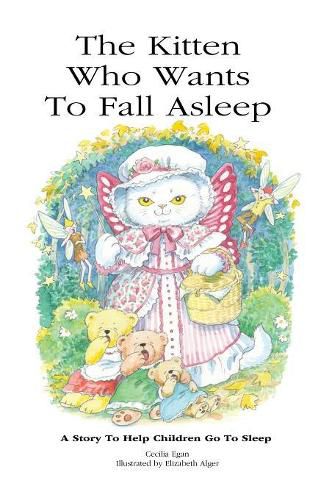Readings Newsletter
Become a Readings Member to make your shopping experience even easier.
Sign in or sign up for free!
You’re not far away from qualifying for FREE standard shipping within Australia
You’ve qualified for FREE standard shipping within Australia
The cart is loading…






This title is printed to order. This book may have been self-published. If so, we cannot guarantee the quality of the content. In the main most books will have gone through the editing process however some may not. We therefore suggest that you be aware of this before ordering this book. If in doubt check either the author or publisher’s details as we are unable to accept any returns unless they are faulty. Please contact us if you have any questions.
The Kitten Who Wants To Fall Asleep
Children sometimes find it hard to get to sleep. What if you could read them a bedtime story incorporating powerful psychological methods to help them fall asleep quickly, easily and without drugs?
Psychological sleep induction techniques include: - putting aside your thoughts until the following day - breathing deeply - slowing down - visualizing a safe and peaceful place - imagining a descent with the sensation of sinking - progressive muscle relaxation - using sleep-triggering words - employing the ‘infectiousness’ of yawning
Such methods are well-known and can be found in libraries or by searching for ‘psychological sleep techniques’ on the Internet.
This book also uses the hypnotic power of rhyme and rhythm. Songs and lullabies have traditionally been used to lull children to sleep. ‘Hypnotic’ poetry works in much the same way.
The poems in this book are in the relaxing, calming rhythm called ¾ time, better known as ‘waltz time’. All parents know that gentle, rocking rhythms can soothe a child.
The rhyming is as important as the rhythm. Children love poems that rhyme. For them, rhyming words make poetry fun and memorable.
Just as children respond to Forssen Ehrlin’s sleep-inducing story of Roger the Rabbit (the inspiration for this book), so they can fall asleep while listening to the tale of Misti the Kitty.
$9.00 standard shipping within Australia
FREE standard shipping within Australia for orders over $100.00
Express & International shipping calculated at checkout
This title is printed to order. This book may have been self-published. If so, we cannot guarantee the quality of the content. In the main most books will have gone through the editing process however some may not. We therefore suggest that you be aware of this before ordering this book. If in doubt check either the author or publisher’s details as we are unable to accept any returns unless they are faulty. Please contact us if you have any questions.
The Kitten Who Wants To Fall Asleep
Children sometimes find it hard to get to sleep. What if you could read them a bedtime story incorporating powerful psychological methods to help them fall asleep quickly, easily and without drugs?
Psychological sleep induction techniques include: - putting aside your thoughts until the following day - breathing deeply - slowing down - visualizing a safe and peaceful place - imagining a descent with the sensation of sinking - progressive muscle relaxation - using sleep-triggering words - employing the ‘infectiousness’ of yawning
Such methods are well-known and can be found in libraries or by searching for ‘psychological sleep techniques’ on the Internet.
This book also uses the hypnotic power of rhyme and rhythm. Songs and lullabies have traditionally been used to lull children to sleep. ‘Hypnotic’ poetry works in much the same way.
The poems in this book are in the relaxing, calming rhythm called ¾ time, better known as ‘waltz time’. All parents know that gentle, rocking rhythms can soothe a child.
The rhyming is as important as the rhythm. Children love poems that rhyme. For them, rhyming words make poetry fun and memorable.
Just as children respond to Forssen Ehrlin’s sleep-inducing story of Roger the Rabbit (the inspiration for this book), so they can fall asleep while listening to the tale of Misti the Kitty.